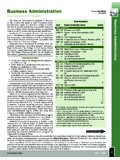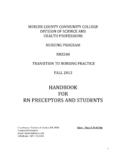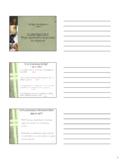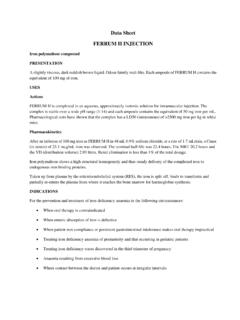Transcription of PTA 210 PTA Technique - MCCC
1 PTA 210 PTA TechniqueVital SignsReview Last Lecture Why learn aseptic Technique ? 3 modes of infection transmission 3 levels of cleanliness Standard precautions (hand hygiene, PPE, respiratory hygiene, equipment/environment care) Sterile Field (creating, maintaining, gowning & gloving)Why Learn Vital Signs? 1. It is an objective measurement of physiological function 2. Used to monitor a patient s status prior to or during patient care 3. Vital Signs may indicate physiological responses to treatmentVital Signs heart rate Blood pressure Respiration rate Temperature PainHeart Rate There are 2 reasons that we measure heart rate 1.
2 To assess a patient s cardiovascular (CV) health and response to PT treatment 2. to determine patency (the openness of the peripheral portion of the CV system ) heart rate Pulse: a measurement of heart rate Determining when to measure pulse rate during a PT session is dependent upon the patient s condition Resting heart rate : measured during rest, one indication of cardiovascular function During PT session: measuring CV system s capacity to provide blood flow during physical stress After PT session: measuring the CV system s ability to recoverHeart Rate & Patency Patency: the openness of the peripheral portion of the CV system We measure the presence or absence of a pulse at a chosen site Chosen sites: Brachial, popliteal, posterior tibial, dorsal pedal, femoral, carotid, radial, apically Why would a pulse not be there?
3 May indicate arterial occlusion secondary to disease states (ie diabetes). Edemamay be a barrier to finding a peripheral pulse If there is no pulse and you don t have a medical explanation, it is a red flag. The PT must be notified so that an appropriate referral can be for Measuring Pulse Manual palpation Use of a stethoscope Oximeter (not responsible for) Doppler (not responsible for)Manual Palpation of Pulses Do not use the pad of the thumb (due to presence of an artery in your thumb) Usethe pads of the index and middle fingers of one hand over the site where the pulse is to be measured Do not press too hard Measured in beats per minute (bpm)
4 Must be included in documentationHeart Rate Measurement Use a watch or clock with a second hand Once a pulse is palpated, count beats within a specific interval of time 60 seconds (no calculation needed) * most accurate 15 seconds (multiply by 4) 10 seconds (multiply by 6) Less than 10 seconds = less precise Using short cuts increases errors Actual = 72 bpm Miss 1 in 60 second count = 71bpm ( error) Miss 1 in 10 second count = 66bpm ( error) heart rate Measurement continued Start the time period of counting at a specific time on the watch, and the first heartbeat felt after the time period has begun is considered beat 1 Resting heart rate Adult norm 60-100 bpm Infant/child norm 80-100 bpm Bradycardia less than 60 bpm Tachycardia greater than 100 bpmMaximal heart rate The highest heart rate a person should achieve upon exertion with respect to age.
5 The following guidelines are based for patients without cardiovascular pathology 220 patient s age = maximal heart rate Ex. 47 year old: 220-47 = 173 bpm Target heart rate The heart rate that an individual should achieve during cardiovascular conditioning with respect to age and medical condition. For patients without contraindications, target HR must fall between 60% & 80& of maximal heart rate 177( ) and 177( ) Between 106 bpm & 142 bpmMeasurement Tools Stethoscope An instrument used to transmit sounds produced by the body to the examiner s Components Ear pieces For an individual s use, potential for spread of disease with sharing of earpieces.
6 Use alcohol to clean the ear pieces Y Tubing Should be flexible and free of cracksStethoscope Bell/diaphragm An enlarged metal or plastic attachment on the distal portion of the stethoscope to be applied to the skin of the patient Amplifies the sounds being made by the body underneath itStethoscope Diaphragm/Bell active position Test for sound with a light tap to make sure that the side down is active Bell Smaller diameter For hearing low frequency sounds (heart murmur) For smaller areas of contact Diaphragm Larger diameter Lung sounds, heart soundsBlood Pressure Why do we measure blood pressure?
7 To determine vascular resistance to blood flow Two values make up blood pressure Systolic pressure: how much pressure the blood is exerting against the arterial walls when the heart is contracting (top #); the first sound heard during reading Diastolic pressure: how much pressure the arterial walls are exerting on blood when the heart is not contracting (bottom #); the last sound heard during reading Method for taking BP Auscultation of an artery using a stethoscope while a sphygmamonometer is applied over the same artery Reported in mmHg (millimeters of mercury) b/c it was originally based on the pressure required to raise a column of mercury in a glass tube Sounds you are listening for are called Korotkoff soundsMonitoring Blood Pressure Location Most commonly The brachial artery in the cubital fossaDocumentation of BP A systolic reading of 120 mmHg and a diastolic pressure of 80 mmHg is documented as 120/80 mmHg Verbally reported as 120 over 80 Documentation should include The body part The side (left or right)
8 Patient position readingContraindications to BP Do not measure BP On arm with lymphedema On arm of ipsilateral side of recent mastectomy Over open wound Dialysis shuntWhat can affect BP readings? Arm side (left is higher) Patient position Medications Disease states Stress Physical activity ageBP Norms & Red Flags Norms Systolic less than 120 mmHg Diastolic less than 80 mmHg Red Flags (an indication to stop PT and examine cardiac status) Systolic does not rise with activity Diastolic increase greater than 20 mmHg during activity Diastolic decrease greater than 10 mmHg with activity Resting Systolic greater than 200 mmHg Resting Diastolic greater than 110 mmHgNorm = 120/80 mmHgSphygmomanometer PRONUNCIATION Sphygsfig Momo Manman Ometerah meterMeasurement Tools Sphygmomanometer (blood pressure cuff) An instrument used for determining arterial blood pressure indirectly.
9 Sphygmomanometer Components Sleeve that contains an air bladder Pressure gauge Bulb and valve for adjustment of pressureSphygmomanometer The Bladder Located in the sleeve, it should be positioned over the area to be occluded Over the brachial artery in the cubital fossa Over the popliteal artery if the UE is contraindicated bilaterallySphygmomanometer The valve Tightened and loosened with the thumb and index finger There is a definite open and closed position Check the operation BEFORE applying the cuff to a patientSphygmomanometer The Gauge Either Mercury or aneroid reading mmHg of pressureMonitoring Blood Pressure Procedure Inspect the cuff for breaks and the location of the bladder Inspect the valve Practice opening and closing the valve With one
10 Hand Wrap the cuff around the UE with the bladder over the brachial arteryMonitoring Blood Pressure Palpate the brachial pulse Check the bell of the stethoscope for the active position Place the stethoscope s bell over the brachial pulse Monitoring Blood Pressure Close the valve & inflate the cuff until the pulse is not longer audible Slightly open the valve, allowing the cuff to slowly deflate Watch the gauge Systolic BP occurs when the pulse first becomes audible Diastolic BP occurs when the last audible pulse is heardMonitoring Blood Pressure Continue to deflate the cuff Record the readings indicating mm HG for systolic/diastolic pressuresBlood Pressure Normalis considered 120/80 mmHg Abnormal Hypertension Systolic consistently greater than 140 mmHg Diastolic consistently greater than 90 mmHg Hypotension Systolic consistently less than 100 mmHg Diastolic consistently less than 60 mmHgBlood Pressure Systolic Abnormality Flat response















